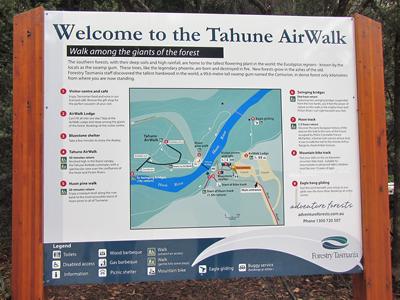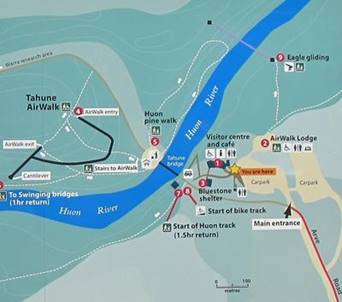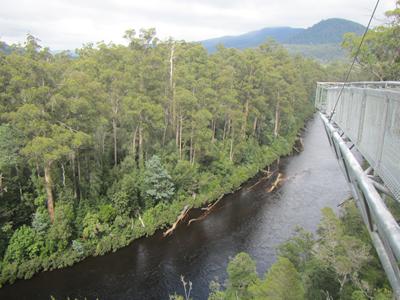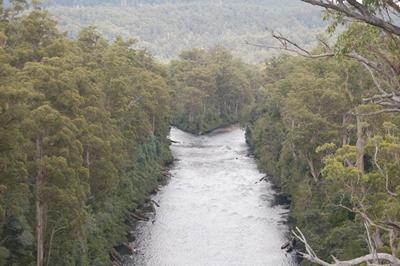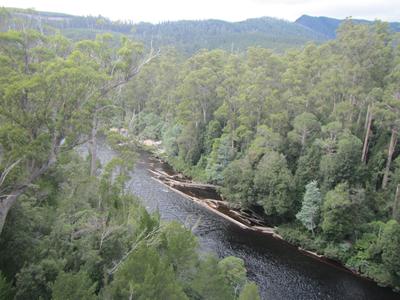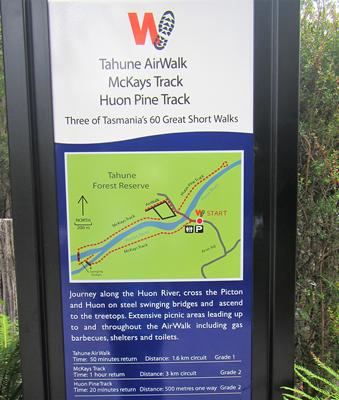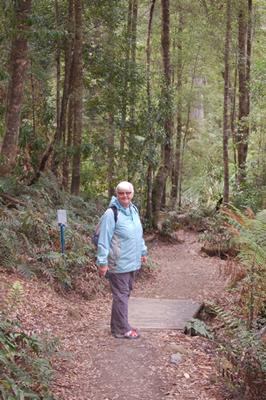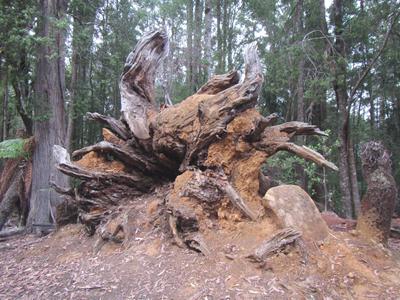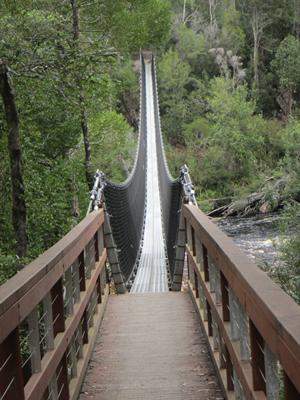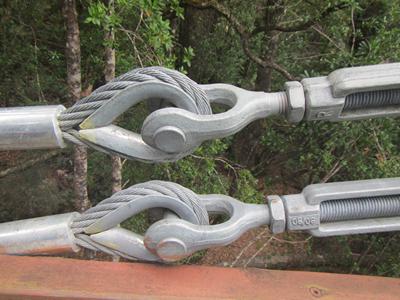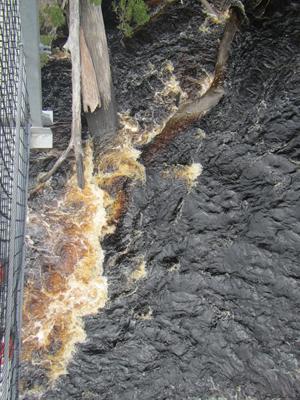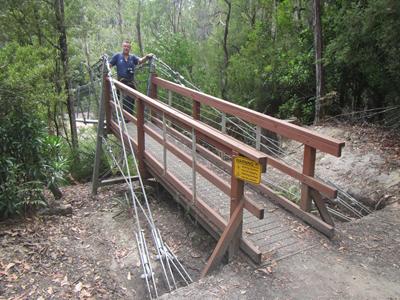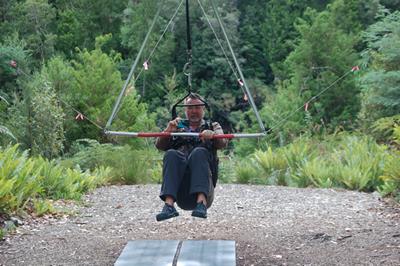Tahune Forest Reserve

Saturday 20th February 2016 We had checked the information boards yesterday when we arrived, and decided we would go first to the Airwalk before it got busy with day visitors.
There are 112 steps up to the Airwalk, which is a 619-metre long walkway 30 metres high through the tree canopy. It ends at a cantilever section that sits 50 metres above the Huon River with views to the confluence of the Huon and Picton Rivers, and the Picton forest beyond.
Looking up at the AirWalk from the forest floor. The cantilever section hangs out over the Huon River, 50 metres up.
The website photo shows the cantilever section suspended over the river. Posing at the end of the cantilever section.
The confluence of the two rivers, the Huon and the Picton. Logs floating downriver, as in the old logging days. We enjoyed the walk through the canopy but saw few birds - it was either the wrong time of day for them or the noisy tourists taking group photos on the walkway frightened them off. No matter, we would return later in the day when the day tourists were gone. Back at ground level, we began following the tracks through the forest.
Can never resist giving these old guys a hug – this Beautiful – a natural work of art. one is a Stringy Bark eucalypt. As we walked the Huon Pine track, the eucalypts gave way to pine trees that could not only cope with but thrive in the moist soil and changing water levels. In this thin strip of riverine rainforest, pine trees were first discovered by settlers in the early 19th century, and became known as Huon pine. It was not until a few years later that the main source of these pine trees was discovered on the west coast where, as we saw a few days ago, some trees are over 2,000 years old. Huon pine trees are known as the “Old folk of the forest”. Pollen records show that they were growing 135 million years ago. Here in the Huon valley the oldest trees are about 450 years old, but they grow much faster in the perfect conditions here and trees on the west coast of the same size are much older. As elsewhere in Tasmania, these pines are protected, and only the wood from naturally fallen trees can be used. Our walk took us next to the “swinging bridges” – one over the Huon and the next over the Picton. I was a little nervous crossing, as I am with any human-made construction dangling out at some height, and it wasn’t helped by Steve’s Peter Pan urge to rock it with every step. But it held firm of course, and allowed us good views of the rivers below.
One of the swinging bridges I was comforted to see the thickness of the cables that supported it.
Posing nonchalantly on the bridge. Looking down at the fast-flowing river.
Comfortingly strong cables…. …anchored firmly to dry land. Our walks took us eventually to the Eagle Hang Glider, which of course Steve couldn’t resist. He got harnessed up, and the cable-controlled hang glider whisked him from the forest floor and 400 metres across the Huon River to a launching point 50 metres in the air. Then he was let go and he glided back along the cable to the start. I was not keen to have a go.
When he arrived back on terra firma I asked him if he’d enjoyed it. “It was OK”, was his response. Not exciting enough, clearly. We had a great day exploring the forest, and after heading back to the bungalow for some tea, we ventured out again just before dark with our torches to see if we could spot any wildlife. It was a bit spooky to see pairs of eyes staring at us from the undergrowth, and next to impossible to make out what they belonged to, but it was great fun. We ended the day with a barbecue supper and went to sleep to the sounds of the forest. Wonderful. |
